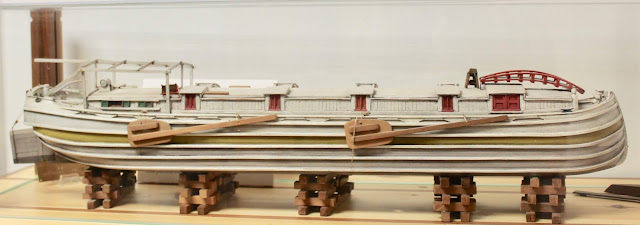Building the Chenango Canal
[Madison County Leader and Observer, Morrisville, N.Y., August 26, 1915]
Hamilton - The work of constructing the canal commenced in 1834 and was completed in 1836. All of the six reservoirs and the feeders for supplying water for the canal and consequently Hamilton became the center of activity during that important period.
A great building boom was inaugurated in the village at the same time. All of the larger buildings existing in the town up to 1870 were constructed at this time, including the Eagle Hotel, Commercial Building, Hamilton Canal Exchange buildings, etc. St. Thomas’ Church was also built at the same time so it is easily seen that those were the liveliest days in the history of our village.
The laborers on the canal and reservoir jobs came with very few exceptions from Ireland, and were the first of that nationality ever seen here. They for the most part came from the slums of Dublin and Cork and were no representative of the Irish people as we know them today than is the Dago a true representative of the nation that gave to the world a Columbus, a Michaelangelo and an Addelina Patti.
There was very little of the criminal about them, but their love of strong drink and fighting was carried to an extreme which fairly appalled the regular inhabitants of the town and inspired a wholesome fear, which was unwarranted, as the fistic amusements of the strangers were confined pretty much to themselves. The central colony of these people in this locality were quartered in shanties erected on the land bounded by the present Maple avenue, Pleasant and Main streets and was called New Dublin.
Maple avenue had its origin at that time, it having been opened as a lane for the accommodation of New Dublin. After the completion of the canal it was extended and made into a regular street and christened Canal street; and after abandonment of the canal its name was changed to Maple avenue, on account of the many maple trees which adorn it.
The behavior among the Irish during the two years of canal construction was a constant source of anxiety and alarm to the villagers as a whole, and twice, in one year the militia was called out to restore order, and so the people were greatly pleased in 1836 when the canal was opened with a celebration, the principal feature of which was the arrival in town of the first canal boat, the “Dove of Solsville.” The canal was finally abandoned in 1876, after having served its purpose well for just forty years.

Mural of the Chenango Canal in Hamilton, N.Y. by David Grace

Mural of the Chenango Canal in Hamilton, N.Y. by David Grace
Notes on the Chenango Canal
Authorized by New York State Legislature in 1833; opened 1837; 97 miles long, Utica to Binghamton, N.Y.; 1,015 feet lockage; 114composite and 2 stone locks (90’x 15’); 1 guard lock, 19 aqueducts, 52 culverts, 21 waste weirs, 12 dams, 11 lock houses; bridges - 56 road, 106 farm, 53 feeder; prism - 40’ x 28’ x 4’ deep; boats - 76 tons burden. Estimated cost - $1,960,546; actual cost, $2,316,186. Feet above tidewater - Utica, 427; summit level at Bouckville and 24 miles south of Utica - 1,128 feet. Number of locks between Utica and Deansboro - 36. Officially closed: May 1, 1878. On May 30, 1878 the Chenango American noted that the farmers were lowering the old canal bridges on their farms since abandonment of the canal. Last season of operation: Opened June 15, 1876, closed November, 1876. Sources: Chenango Union, May 18, 1876; Chenango American, Oct. 19, 1876.
Madison County Leader and Observer
Madison County Leader and Observer
August 26, 1915
(excerpt)
Hamilton - The behavior among the Irish during the two years of canal construction was a constant source of anxiety and alarm to the villagers as a whole, and twice, in one year the militia was called out to restore order, and so the people were greatly please when in 1836 the canal was opened with a celebration, the principal feature of which was the arrival in town of the first canal boat the “Dove of Solsville.” The canal was finally abandoned in 1876, after having served its purpose well for just forty years.




Comments
Post a Comment